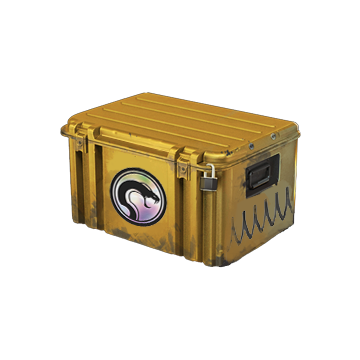Antalya Escapes
Discover the best of Antalya with exclusive insights and tips.
Peeking into the CSGO Cases Market: What You Didn't Know About Skin Economics
Uncover the secrets of the CSGO cases market! Discover hidden gems in skin economics that every gamer should know.
Exploring the Hidden Dynamics of the CSGO Skin Economy
The CSGO skin economy has evolved into a complex and multifaceted marketplace, driven by player demand and the rarity of in-game items. As players engage in the game, they acquire various skins for their weapons, each varying in design, popularity, and market value. Skins can be classified into different tiers based on their rarity, from Common to Covert, making some much more sought after than others. When players trade, buy, or sell these skins on platforms like the Steam Community Market or third-party sites, they influence the market's dynamics significantly. Factors such as seasonal events, updates, and community trends can cause fluctuations in prices, creating unique opportunities for savvy collectors and traders.
Understanding the hidden dynamics of the CSGO skin economy requires players to stay informed about market trends and player preferences. For instance, certain skins may spike in value due to their association with popular esports teams or prominent streamers. Additionally, the introduction of new skins can create shifts in demand and affect the prices of older items. Here are a few key factors that drive the CSGO skin economy:
- Market Trends: Awareness of trending skins can help players make informed trading decisions.
- Scarcity: Limited editions and skins no longer available through regular gameplay often see increased value.
- Community Engagement: Active participation in forums and social media can provide insights into what’s hot in the market.

Counter-Strike is a popular team-based first-person shooter that has captivated gamers around the world. Players can choose from various weapons to complete their missions, including the sg 553, known for its precision and power. The strategic gameplay and intense competition make it a favorite in the esports community.
How Supply and Demand Shape CSGO Case Values
The values of CSGO cases are primarily influenced by the fundamental economic principles of supply and demand. When a new case is released, the initial excitement among players leads to a spike in demand. As players seek rare skins and items, the demand often outweighs the supply, driving prices higher. However, as time passes and more cases enter the market, the supply increases, which can lead to a decrease in value. This cycle highlights the importance of monitoring both player interest and market availability, as the success of any given CSGO case often hinges on these two factors working in tandem.
In addition to fluctuations in availability, various external factors can also impact the value of CSGO cases. For instance, community events and game updates can revive interest in certain cases, momentarily altering the typical supply-demand dynamic. Moreover, the rarity of specific items within a case, combined with their popularity, plays a crucial role in determining its overall market value. As collectors and traders navigate these complexities, understanding how supply and demand affect CSGO case values becomes essential for making informed decisions in the vibrant economy of Counter-Strike: Global Offensive.
What New Players Need to Know About CSGO Cases and Skins
If you’re a new player diving into CSGO, understanding cases and skins is essential to enhancing your gaming experience. CSGO cases are virtual loot boxes that contain a variety of cosmetic items, including weapon skins, gloves, and stickers. New players should know that these cases are not available for free; they can be acquired through gameplay, purchased on the Steam Marketplace, or gifted by friends. When you open a case, you will need a corresponding key, which can also be bought. Each case has a different collection of items, often featuring a rare skin that can significantly increase its value on the market.
Moreover, the world of CSGO skins can be quite fascinating and lucrative. Skins are purely cosmetic; they do not affect gameplay but allow players to personalize their weapons and showcase their style. Some skins can be extremely rare and may sell for hundreds or even thousands of dollars in the Steam Marketplace. New players should familiarize themselves with terms like float value and condition, as these factors play a crucial role in determining a skin's appearance and market price. Understanding the demand and rarity of different skins can help players make informed decisions when trading or buying items.